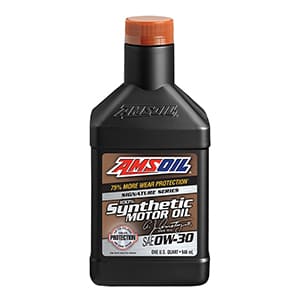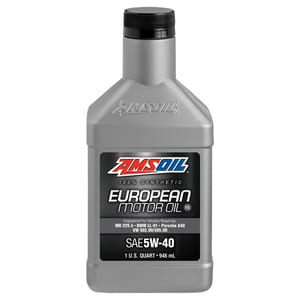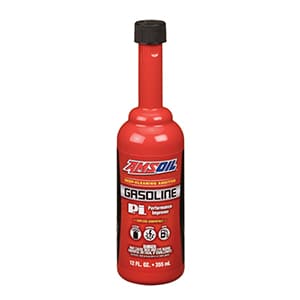When it comes to vehicle maintenance, one often-overlooked aspect is tire pressure. For many car enthusiasts, the tire pressure light can appear mystifying. The subsequent guide aims to demystify this warning light, providing comprehensive information about its implications, types of monitoring systems, troubleshooting tips, and much more.

Temperature Changes and Vehicle Impact
The weather can have a significant influence on various aspects of your vehicle, particularly when it comes to sudden temperature changes. For instance, consider a scenario where the temperature drops from 70°F to 30°F overnight. Such a drastic change can notably impact your vehicle and the fluids you utilize.
Dramatic Temperature Drops Overnight
A substantial drop in temperature, especially overnight, can cause various complications including freezing of the fluids, decreased battery efficiency, and most importantly, fluctuations in tire pressure.
Effects on Vehicle and Fluids
When temperatures drop suddenly, the air inside your tires contracts, leading to a decrease in pressure. This phenomenon can trigger the tire pressure light on your dashboard, alerting you to the change. Additionally, the cold can affect the viscosity of engine oil, making it harder for the engine to turn over when starting the car in the morning.
Tire Pressure Monitor Light
One of the most common alerts drivers encounter is the tire pressure monitor light. Understanding what this light indicates and how the system functions is essential.
Description of the Warning Light
When the tire pressure light illuminates on your dashboard, it generally signifies that one or more of your tires are underinflated. This light is an essential component of your vehicle’s onboard diagnostics.
Purpose of the System
The primary function of the tire pressure monitoring system (TPMS) is to alert drivers to changes in tire pressure that could affect vehicle performance and safety. Maintaining optimal tire pressure is crucial for ensuring safety, improving fuel efficiency, and prolonging tire life.
Types of Tire Pressure Monitoring Systems
There are two primary types of TPMS: indirect and direct systems. Each functions differently and has its own mechanisms for measuring tire pressure.
Indirect System
Uses ABS Module
The indirect TPMS employs the anti-lock braking system (ABS) module to monitor tire pressure indirectly.
ABS Sensor and Tooth Ring
This system relies on the ABS sensor, which rotates around a tooth ring positioned on the wheel.
How It Detects Pressure Changes
If a tire begins to deflate, its diameter decreases, causing it to rotate faster than the other tires. The ABS sensor detects this change in rotational speed, signaling the ABS module that there is a potential issue with tire pressure.

Direct System
TPMS Monitors in Tires
The direct TPMS uses sensors installed within each tire to measure tire pressure directly.
Banded Sensors
These sensors, often strapped to the rims of the tires, provide real-time readings of tire pressure.
Direct Pressure Readings
Unlike indirect systems, direct TPMS offers immediate and precise readings of tire pressure, allowing for quicker responses to changes.
Troubleshooting Tire Pressure Monitor Lights
Understanding how to troubleshoot the tire pressure monitor light can save you time and potential vehicle damage.
Solid Light
Likely Air Pressure Problem
A solid tire pressure light typically indicates that one or more tires are underinflated.
Solution: Add Air to Tires
In such cases, simply adding air to the tires to reach the recommended pressure levels should resolve the issue.
Blinking Light
Potential System Problem
A blinking tire pressure light suggests a malfunction in the TPMS itself.
When to Seek Professional Help
If the light continues to blink, it is advisable to consult a professional mechanic to diagnose and correct the issue.

Tire Rotation and TPMS
Rotating your tires is a routine maintenance task that can affect the TPMS.
Self-Learning Systems
Some modern vehicles have self-learning TPMS, which automatically recalibrate after tire rotation.
Relearn Procedures
However, other vehicles may require a manual relearn procedure to ensure the system correctly identifies the position of each tire.
TPMS Relearn Process
Relearning the TPMS can be done through several methods, depending on your vehicle’s make and model.
Using a Scan Tool
A scan tool can be utilized to initiate the relearn procedure, guiding you through each step.
Accessing Driver Information Center
Some vehicles have an option in the driver information center specifically for TPMS relearning.
Following Prompts
Follow the on-screen prompts to complete the relearn process, which involves specifying the position of each tire.
Shooting Tires for Position Recognition
This may involve using a tire gauge or similar tool to identify the exact position and pressure of each tire.
Driving or Releasing Air for Relearning
Driving the vehicle or releasing air can also facilitate the relearning process, depending on the manufacturer’s specifications.
Tire Pressure Facts
Maintaining optimal tire pressure is not just about responding to the tire pressure light but also about understanding the underlying factors affecting tire pressure.
Monthly Pressure Loss
Average PSI Loss Per Month
Typically, tires lose about one PSI (pound per square inch) per month. Regular monitoring is essential to maintain proper tire pressure.
Temperature Impact on Tire Pressure
PSI Change per 10°F Temperature Change
For every 10°F change in temperature, tire pressure can change by approximately 1-2 PSI. A 40°F drop can thus significantly impact your tire pressure, potentially triggering the tire pressure light.
Gas Mileage Impact
Percentage of Fuel Efficiency Affected by Tire Pressure
Underinflated tires can reduce fuel efficiency by up to 3%, making regular tire pressure checks vital for maintaining optimal gas mileage.

Cold Weather and Oil
Cold weather not only affects tire pressure but also the performance of your vehicle’s engine oil.
Importance of Oil in Cold Temperatures
In colder temperatures, engine oil can become more viscous, making it harder for the engine to operate efficiently. Ensuring that you use oil suited for lower temperatures can help maintain engine performance.
Fuel Additives for Cold Weather
Fuel additives are another aspect of vehicle maintenance that can significantly enhance performance, especially in colder weather.
Performance Improver
Usage Frequency
It is advisable to use a performance improver every 4,000 miles to keep the engine running smoothly.
Benefits
This additive works by cleaning the fuel system, improving combustion, and enhancing overall engine performance.
Upper Cylinder Lubricant
Usage Frequency
The upper cylinder lubricant should be used in every tank of gas.
Benefits
This lubricant aids in maintaining the injector spray pattern, clearing deposits, and ensuring optimal ring sealing for better fuel efficiency.
Benefits of Fuel Additives
Using the right fuel additives can offer several advantages, particularly in maintaining vehicle efficiency during colder months.
Maintaining Injector Spray Pattern
A clean injector spray pattern ensures that fuel is burned more efficiently, reducing waste and improving performance.
Clearing Deposits
Regular use of fuel additives can help remove carbon deposits, which can impair engine performance.
Improving Ring Sealing
Well-sealed rings mean the engine operates more efficiently, translating to better power and fuel efficiency.
Enhancing Engine Efficiency
Overall, fuel additives help the engine perform at peak efficiency, minimizing wear and tear.
Improving Fuel Mileage
Proper use of fuel additives can improve your vehicle’s fuel mileage, which is particularly beneficial in cold weather when engines tend to be less efficient.

Choosing the Right Fuel Additive
Selecting the right fuel additive can depend on various factors, including the type of engine, driving conditions, and specific performance goals.
How Fuel Additives Work
Cleaning Fuel Lines
Fuel additives help clean the fuel lines, ensuring smoother fuel flow and better engine performance.
Cleaning Injectors
Regular use of additives can also keep the injectors clean, preventing clogs and ensuring efficient fuel combustion.
Removing Soot and Deposits
Additives help remove soot and other deposits from the engine, contributing to a cleaner and more efficient combustion process.
Where to Find AMSOIL Products
For car enthusiasts looking to enhance their vehicle’s performance, AMSSOIL offers a comprehensive range of products.
Website Information
To explore AMSOIL’s extensive product line, you can visit their official website at amsoil.com.
Product Range Overview
From engine oils to fuel additives, AMSOIL provides a variety of products designed to improve vehicle performance and efficiency, especially in cold weather.

Additional Cold Weather Vehicle Tips
Ensuring your vehicle is winter-ready involves more than monitoring tire pressure and using the right oil.
Check Battery Health
Cold weather can reduce battery efficiency, making it important to check and, if necessary, replace your car battery before winter sets in.
Inspect Wiper Blades
Good visibility is crucial, so make sure your wiper blades are in good condition and replace them if needed.
Use Winter-Grade Oil
Switching to winter-grade oil can make it easier to start your engine on cold mornings.
Keep the Fuel Tank Full
Keeping your fuel tank at least half full can prevent fuel lines from freezing.
Importance of Regular Tire Pressure Checks
Given the potential impacts on safety and efficiency, regular tire pressure checks should be a staple in your vehicle maintenance routine.
Whether using an indirect or direct TPMS, understanding and responding to the tire pressure light can prevent costly repairs and ensure a smoother driving experience, particularly in the colder months.
For car enthusiasts, these insights aim to provide a comprehensive understanding of the tire pressure light, allowing you to maintain your vehicle at its best. Explore AMSOIL’s product range to ensure your vehicle is fully equipped to handle the challenges of cold weather.

